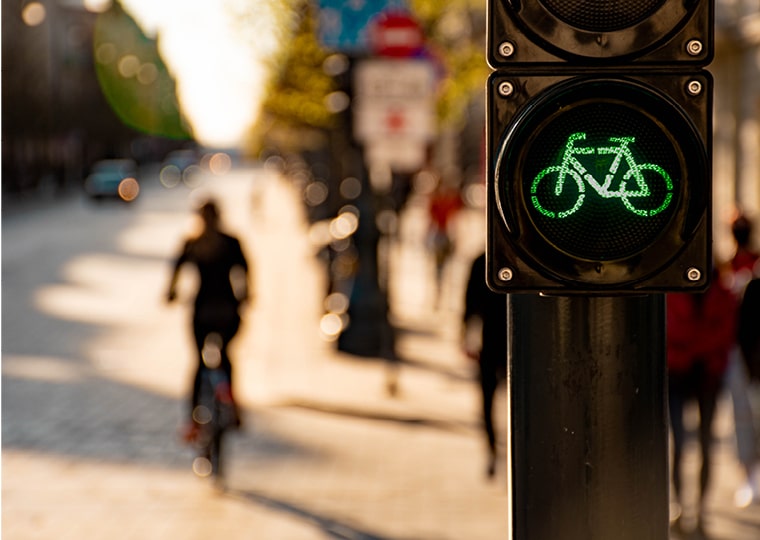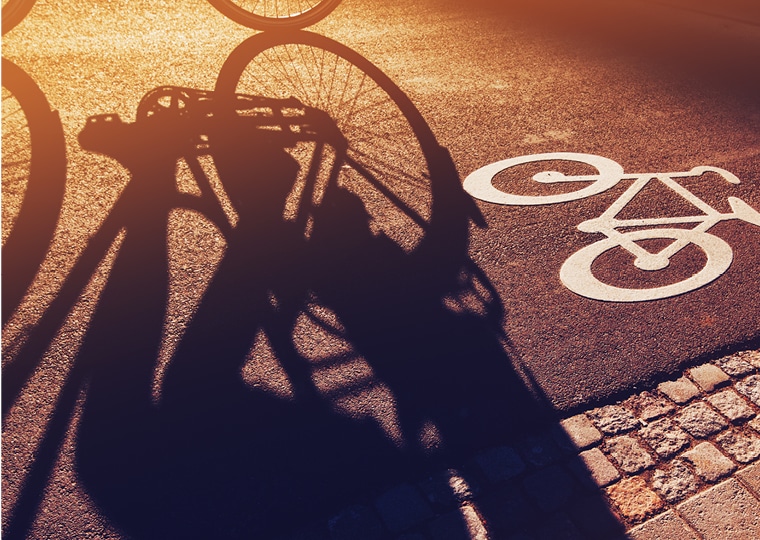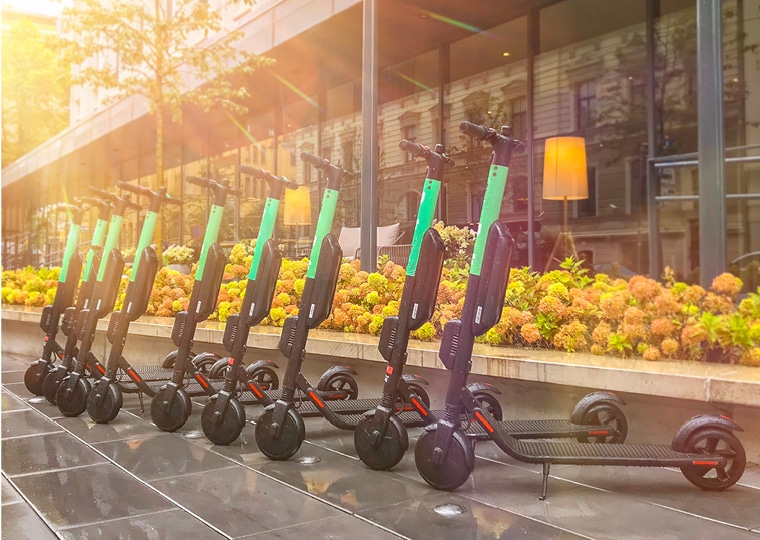
In this three-part series, Rob Spillar, STV’s Director of Smart Cities, examines the national movement to invest in smarter and safer bicycle and pedestrian infrastructure, using real-world examples to guide best practices.
In part one Rob looked at the current cultural shift to create more innovative and safer pedestrian and bicycle infrastructure in the United States. In part two, he highlighted infrastructure examples he’s seen first-hand, including bike lane barriers and traffic calming signals.
In the third and final installment of this series, Rob examines how enhancing bike parking and other infrastructure, can help create a bike culture that goes beyond just providing bike lanes. He also examines what STV is doing to support bike programs throughout the United States.
Many cities place bike racks on-street for the public to use, but what about in communities where snow falls in the winter, or in areas where residents primarily live in residential towers with inadequate off-street storage?
As evidenced by the popularity of bike infrastructure in Northern U.S. cities, committed cyclists will ride, even in winter, and that means people will store bikes in public locations. Having been in Denver this past winter – where it’s both snowy and filled with residential towers and inadequate off-street storage – I can personally attest that the bike lanes in the city are used year-round. The city keeps them clear and diehard residents use them even in subfreezing conditions.
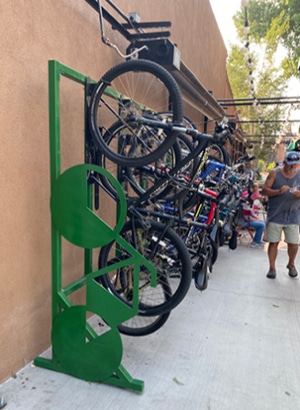
This spring, STV attended the celebration of the opening of the Colorado Smart Cities Alliance, an organization that serves as a technology incubator for Smart City technology start-ups. One of the sponsored companies this year is developing an automated snowplow that when deployed, will plow or sweep the local bike lanes.
In Salida, CO, I saw the innovative vertical bike rack shown above serving a dense multifamily and retail core, complete with a heater. These examples in Denver and other Colorado communities demonstrate a commitment to not just accommodating the bicycle when it is convenient, but rather to building a year-round bike culture. These are great examples of agencies creating and responding to a bike culture.
Over the past few decades, our industry has been busy deploying bike lanes and infrastructure, seeking to increase the mileage of bike lanes across the nation. This has been necessary because of the need to “catch up” to the demand demonstrated for active transportation infrastructure nationwide. As the City of Austin’s Transportation Director and City Traffic Engineer, I authorized miles of quick-build lanes using paint, vertical lane delineators, and rubberized barriers (parking stops). This quick-build approach allowed us to attain a bikeway network of critical mass, necessary to begin stemming the number of severe and fatal crashes involving cyclists and pedestrians. The idea behind this quick-build approach was that there could be peace on the street if everyone had a piece of the street to use. I still stand behind this strategy, but even with that quick-build approach, the Austin Transportation Department recognized the need to make long-term, sustainable investments in bike structures at critical points within our network.
In Colorado Springs, CO, STV designed and delivered a significant bike and pedestrian bridge. The Academy Boulevard Bridge was designed to fit within its mountain surroundings and be an asset to the surrounding community. Great designs like this bridge are a hallmark of STV and as part of the Colorado Springs community, we are proud to provide added value for our clients in expanding bike infrastructure throughout the Colorado Front Range and to supporting the evolving bike culture in the state.
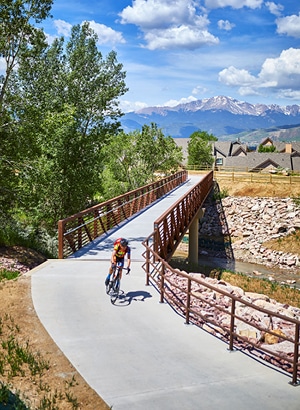
Our Smart Cities team has provided national expertise to our local North Carolina teams in Charlotte and Raleigh/Durham to create a robust bike infrastructure practice with a goal of developing bike/pedestrian and greenway facilities throughout the United States. Additionally, we are pairing this new focus group with our unique expertise and qualifications in ADA design and analysis centered in Colorado Springs to deliver superior and sustainable infrastructure.
At STV, we are committed to the sustainability of communities of all sizes. Bicycle and pedestrian infrastructure are key tools to ensure the long-term sustainability, health, and vibrancy of the communities in which we work. We are committed to sharing great ideas that build bike culture with our clients and within our community – regardless of who was responsible for designing the infrastructure in the first place. As an industry, we collectively need to be willing to share great ideas in the form of pictures, concepts, programs, etc. with our municipal clients to build the next generation of great cities throughout the United States.

Have an example of smart bicycle infrastructure investment or want more information about how STV is creating Smart Cities by advising on solutions for vulnerable roadway users? Contact Rob Spillar at .
